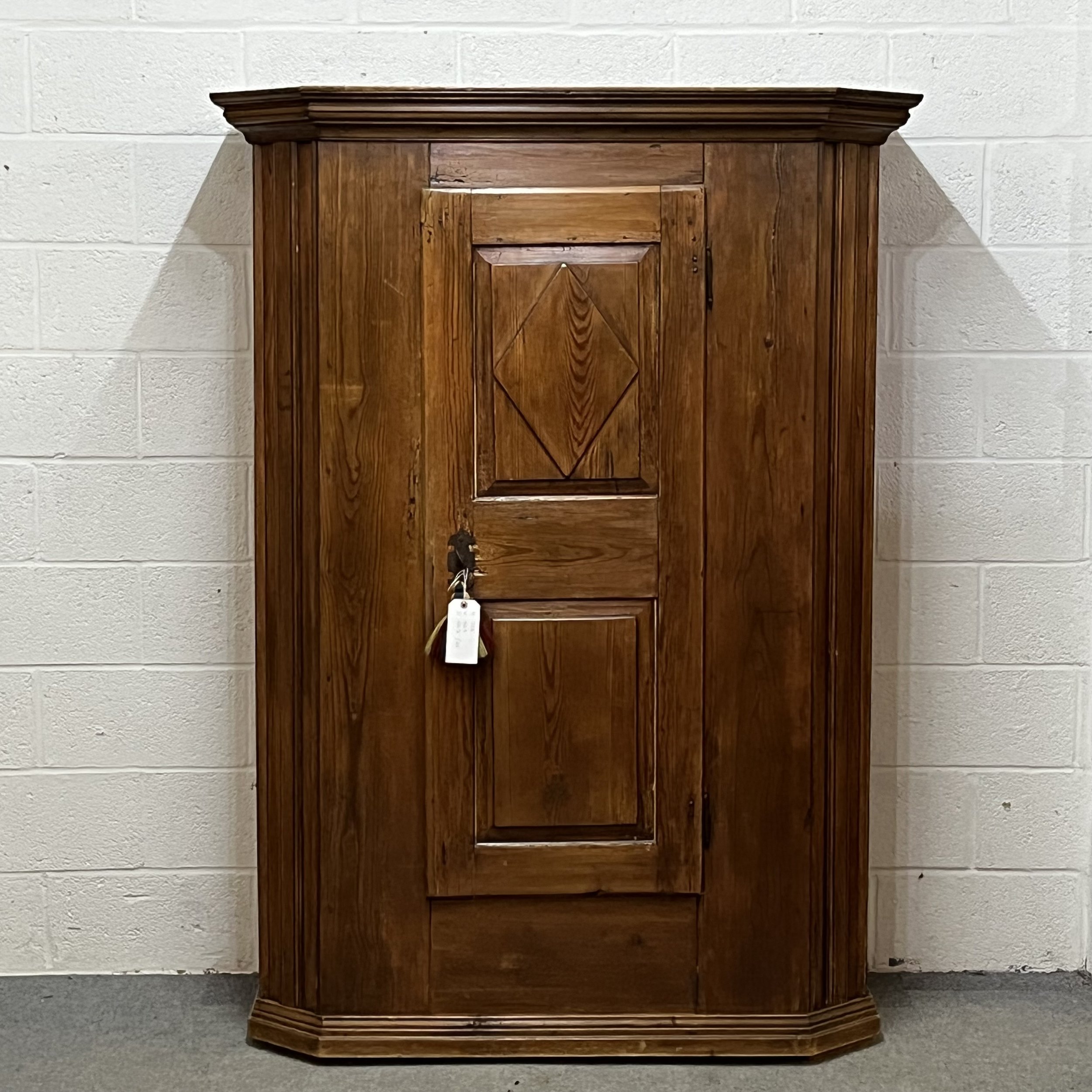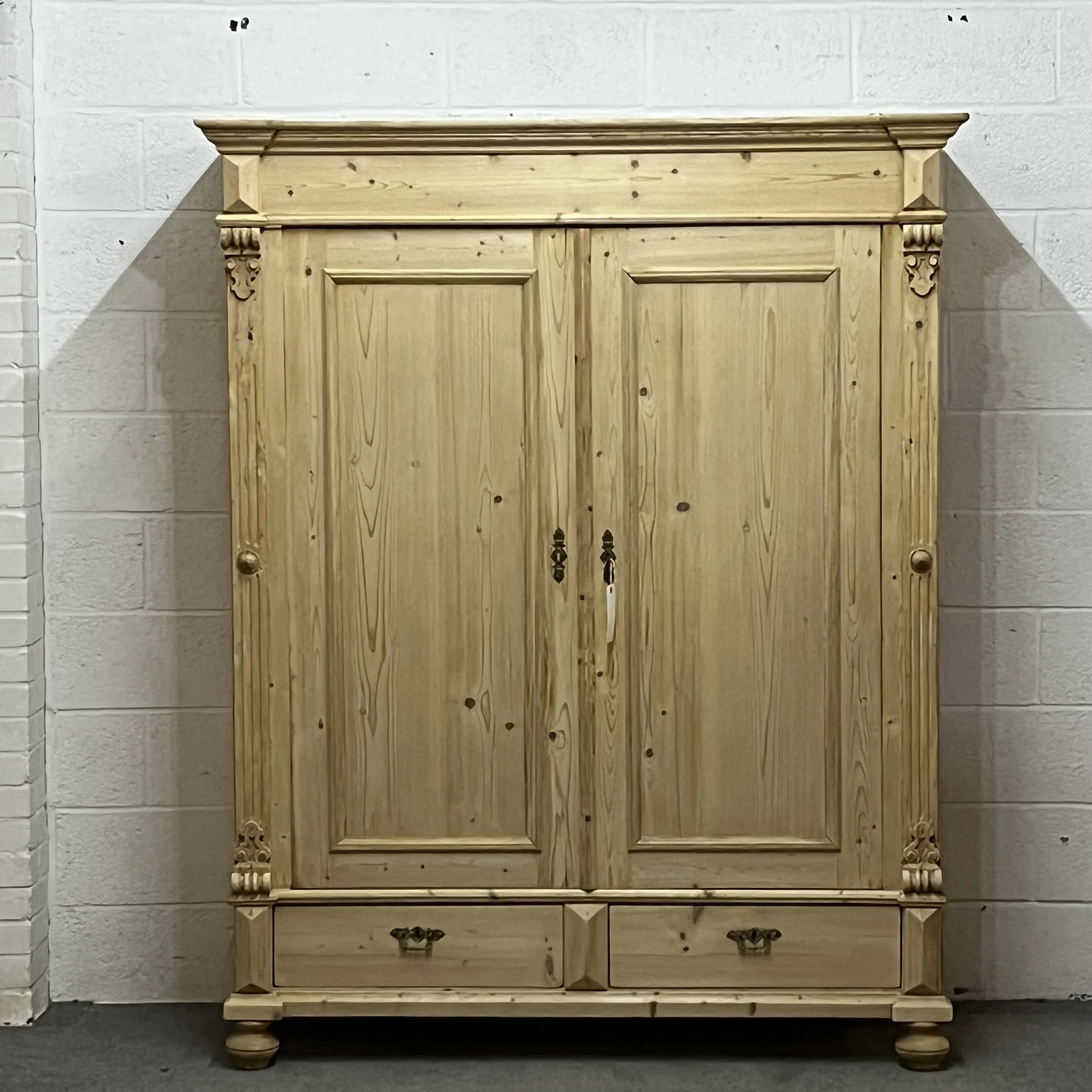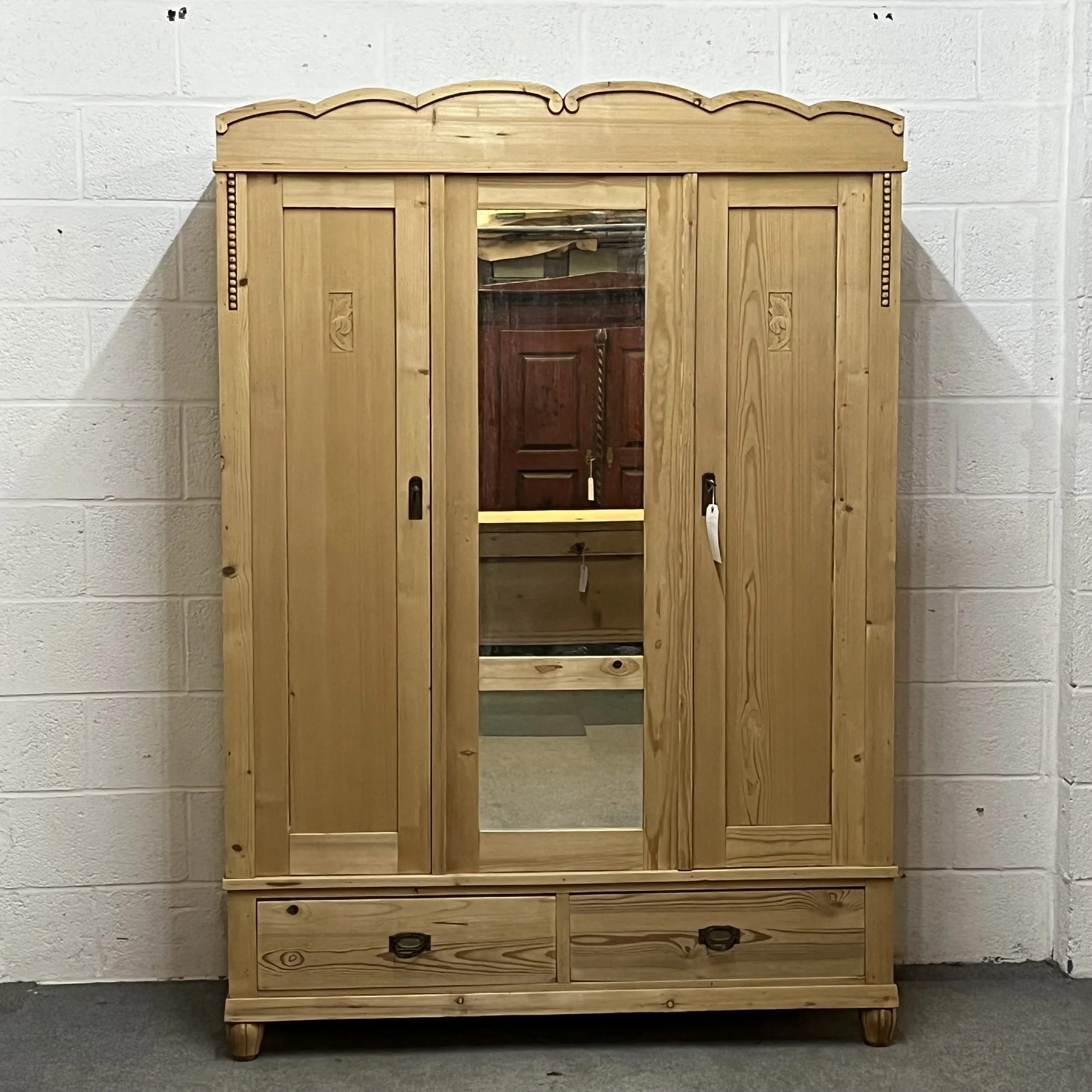In my experience, different types of pine have different patinas and shades. Whether it has been a quick growing or slow growing pine tree also determines whether the grain will be close or wide. (You will notice on most new pine furniture the wide grain). Also pine will darken with age.
Georgian and early Victorian English pine furniture tended to be made from very slow growing pine, so the grain was often very tight, and the wood quite hard (for a soft wood like pine).
The English had determined that only the lower class would have a piece of furniture with the bare wood showing (just waxed or oiled), so they tended to like it painted. This lead paint will have protected the wood and also stopped the sun's rays from darkening it (Pine will darken with age if exposed to light). Therefore when we decided to start to strip and wax our old pine furniture (starting in the 1970's, and very often stripping our old pine doors also), we found the lovely old slow growing tight grained wood underneath, and we enjoyed the light colour which was enhanced when waxed with a beeswax finish.
The darkening of pine can be regularly seen on the antique furniture I deal in, especially on many old pine Marriage Chests and Pine Wardrobes. These types of furniture were often given as wedding present. An old pine box or wardrobe would be bought, then re-painted and then the initials of the married couple would be also painted on the item in thick lead paint. When we strip our furniture, the stencil of the writing can still be seen, it will be lighter in colour because the lead paint has protected the wood just a little more than the thinner paint elsewhere.
So to sum up:
Pine is a popular wood choice for furniture due to its durability and attractive grain pattern. However, different types of pine may have different shades and patinas, depending on factors such as the speed at which the tree grew and the grain pattern of the wood. Slow-growing pine tends to have a tighter grain and may be harder than quick-growing pine, which may have a wider grain. Pine can also darken with age, especially if it is exposed to light.
In the past, pine furniture was often painted, especially in England, where it was considered a lower-class material. This paint protected the wood and prevented it from darkening over time. When antique pine furniture is stripped of its paint, the wood underneath may have a lighter color due to the protective effects of the lead paint. This can be seen on items such as marriage chests and wardrobes, which were often given as wedding presents and decorated with the initials of the married couple in thick lead paint.



